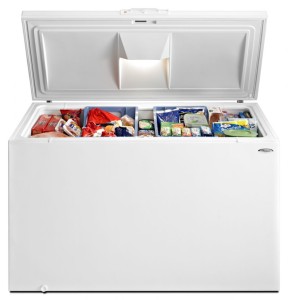
Featured Image Source: Wikimedia Commons
For some people, an ice machine could seem like an unnecessary luxury that everybody could live without. But if you have ever handled an ice tray, you know how awkward and messy things can get. An ice machine can be very convenient and, coupled with a sturdy ice bucket, can save you from the hassle of carrying ice in bags with you. But before rushing to the store and buying an ice machine, you need some basic knowledge about how they work, what features and perks a top quality unit should have because they can get quite expensive, and you surely do not want to make a bad investment. Here is everything you should know before purchasing an ice machine.
Types of Compressors
The first thing you need to know is what type of compressor the ice machine employs. Generally speaking, most ice machines have one out of three types of compressors, which we will discuss in detail below:
• Air cooled compressors. If you are on a tight budget, these are the cheapest ice machines on the market. However, they tend to make a lot of noise and need a lot of space to breathe and function properly, or else they risk breaking down.
• Water cooled compressors. These ice machines are the middle ground between the air cooled and remotely cooled types and are quieter than the former category. However, they require two separate lines: one line for the ice, and another one for the compressor. On the upside, thanks to these technical specifications, you can fit water cooled ice machines in the tightest spots, which is ideal if you are dealing with space restraints.
• Remotely cooled compressors. Also called remote condenser ice machines, these are typically considered by specialized sites like Ice Maker Pro the best ice makers available on the market. Because the machine itself (the condenser) is typically installed outside, on a concrete slab or even on the roof, it is the quietest model of the bunch. The unit and the condenser are connected through a refrigerant line. Due to these technical specifications, remote cooled ice machines are quite expensive. On top of all that, you will need to hire a specialized contractor in order to install it properly. On the flip side, they pay from themselves on the long run because they are capable of producing larger quantities of ice without burdening your water bill. If due to restraints, whether spatial, geographical or otherwise, prohibit you from setting up an air cooled or water cooled machine, remotely cooled types are your best option.
Types of ice
The next thing to learn before purchasing a unit is the types of ice cubes that ice machine can produce. Not all ice cubes are alike – some melt slower, others are harder to chew, while certain types are suited only for a few kinds of beverages. Depending on the complexity and model of the unit. Here are the types of ice that most ice machines produce:
• Ice cubes are amongst the slowest melting type of ice. The most efficient in terms of water consumption.
• Diced ice. It is very similar to ice cubes in shape and form. What separates these two is that unlike ice cubes, diced ice is better at cooling off strong alcoholic beverages such as vodka and whiskey on the rocks.
• Nugget ice. In terms of melting time, it sits somewhere between ice cubes and diced ice. It is most commonly used in hospitals and other healthcare industries because it is easier to chew, especially by patients who are severely dehydrated.
• Flake ice. If you have ever went to a KFC, McDonald’s or any kind of fast food joint, you have surely tasted it because this is what they use to prepare their blended drinks. It is very cost efficient, it can mold in any possible shape and goes very well in combination with sodas. Other commercial places where flaked ice is used to its full advantage are fish, meat and seafood markets. Even some salad bars use it.
Energy Efficiency
The next thing you should verify is whether or not the ice machine is energy efficient, especially if you are someone who is concerned about the environment. Moreover, freezing water will consume a lot of energy, so it is important to find an ice machine that will not overwhelm your water bill.
A surefire way of knowing if the machine is energy efficient is verifying if the product has been certified by energy star. However, it is worth noting that the machines rated by Energy Star are usually the ones used for commercial purposes, so if you want one for home use, this is not the best indicator. Regardless of where you will use it, it is still worth checking out the information provided by their website for some general guidelines.
Filters
To prolong the life of the ice machine, it is best to equip your ice machine with a water filter. This particular add-on will not only reduce the mineral buildups in the ice machine, but it will make the beverages taste better. Here are a few other benefits of adding a water filter:
• The ice will consume a lot less energy because it will work more efficiently.
• Increased ice generation capabilities.
• Beverages of all kinds will taste better.
Installation
While most ice machines can be easily installed by following the advice presented in the guidebook, it is a good idea to take these factors into consideration before starting the assembling process:
• Space and ventilation. First things first, ensure sufficient space for the bin, filter and machine itself. If you want your ice machine to be as efficient as possible, it is vital to provide it with sufficient air flow. Read the instructions manual for any recommendations in regards to space, placement and various other measurements.
• Power supply. Some ice machines do not include a plug or a cord in the package, so you will probably need to call an electrician to set up the machine’s hard wire. Again, the guidebook should provide information regarding the machine’s power requirements.
• Floor drain and water supply. This is a tad more complicated, so unless you are familiarized with plumbing, you will have to call a specialist. Many ice machine, especially the undercounter types, require a stable connection to a cold water supply and a separate shutoff valve. To flush down any excess water and waste generated by the machine, you will need to install a separate floor drain. Make sure to consult with local authorities about legally allowed drain types, correct placement as well as any other requirements enforced by plumbing codes.
Conclusion
If your family’s or entourage’s ice demands are high, a top quality ice machine is one of the best long term investments that you can make. Since many models are quite expensive, you need to familiarize yourself with a few basic concepts regarding how they function, what types can be found on the market and how to install them in order to make the best choice possible. The factors that you need to consider include energy efficiency, compressor types, filters and the types of ice that ice machine can produce. Make sure to read through this article and you will get all the information that you need.




